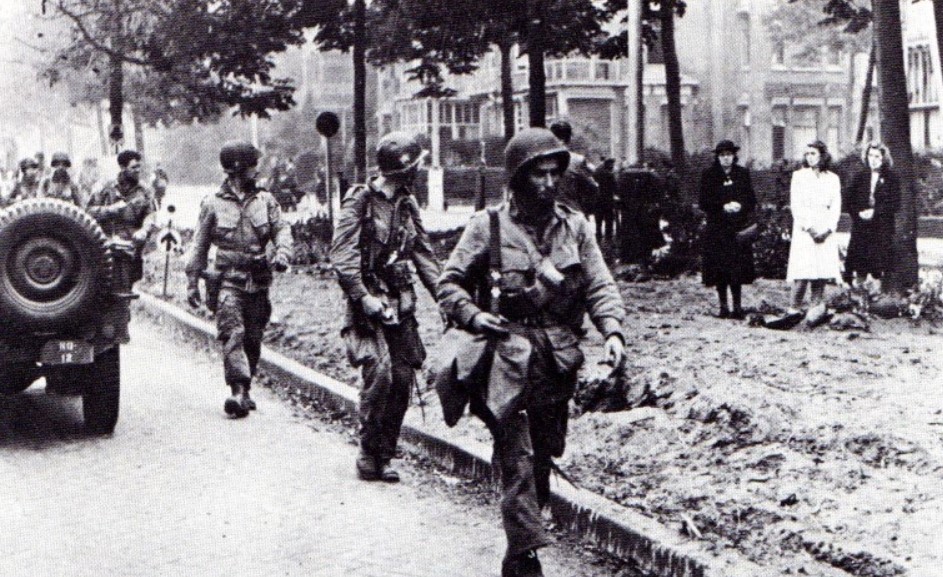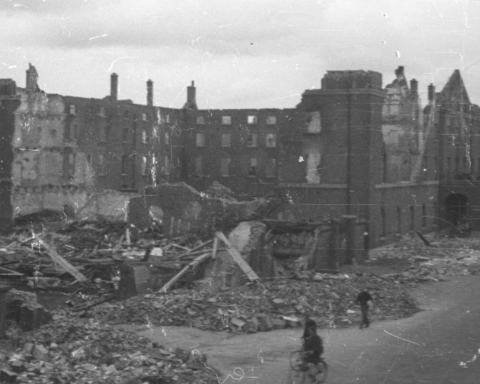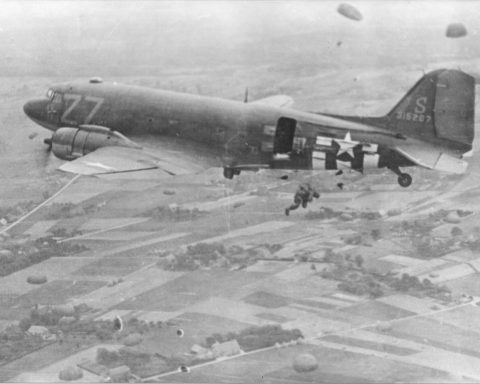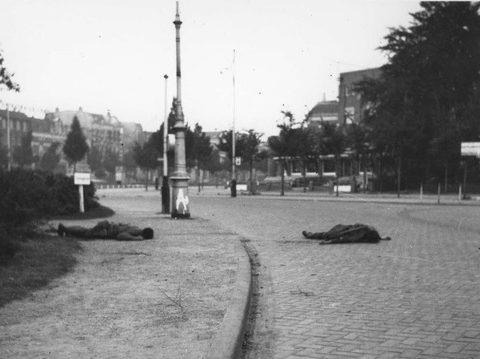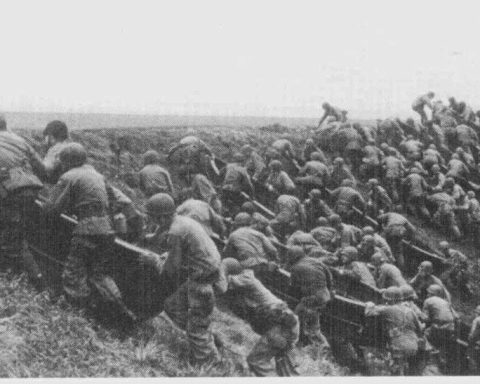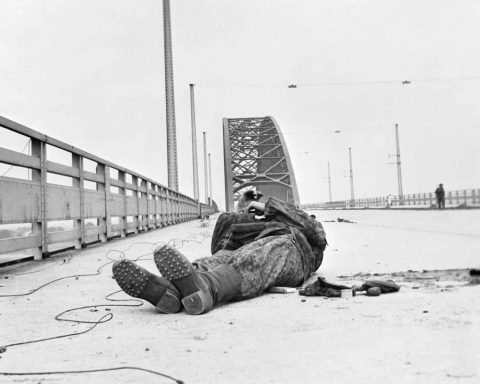Immediately after the Allied airborne landings on September 17 to capture the bridges over the Dutch rivers, the Germans decided to place the focus of their defense at Nijmegen. Here, at the bridges over the Waal, the advance of the ‘Anglo-American enemy’ would be reversed.
The Germans could not use the bridge over the Rhine near Arnhem due to the presence of British paratroopers. But reinforcements from the 10th SS Armored Division Fundsberg were brought across the Pannerdens Canal via the foot ferry at Zevenaar to strengthen the lines at Nijmegen from there.
Because the Americans did not have the capture of the Waal Bridge in Nijmegen at the top of their priority list, this gave the Germans time to install sufficient troops on the north side of the Waal Bridge.
Before the landings, the paratroopers in England had heard that there was a good chance that the Germans would surrender immediately as soon as they saw the well-trained airborne troops. During an attack on the Waal Bridge on Monday, September 18, the Americans had already concluded that this was not the case at all.
The Germans were well dug in on either side of the Waal Bridge. The Germans had the advantage of the higher Valkhof, directly west of the driveway to the Waal Bridge. From here they had a clear field of fire on approaching troops. The lightly armed paratroopers were no match for the Germans, who defended the ramp at the Waal Bridge with heavy weapons and 88 mm guns.
XXX Corps reaches Nijmegen
But Allied reinforcements were on their way. In the early morning of September 19, the tanks and vehicles of XXX Corps had crossed the repaired bridge at Son and drove towards Nijmegen in record time. Fifty kilometers were covered in five hours.
General Jim Gavin of the 82nd Airborne Division in Nijmegen was relieved that the isolation of his airborne division had now been broken. “I was overjoyed,” he said later. Now that the ground troops had arrived with the tanks, a new attack on the Waal Bridge could be carried out, this time supported by the British tanks.
And so in the afternoon of Tuesday, September 19, another frontal attack was carried out via the Oranjesingel on the German positions on the south side of the Waal Bridge. But even with tank support there was no way through. It would take days to drive out the Germans, and the Allies simply did not have that time. They had to advance as quickly as possible to Arnhem to relieve the British paratroopers of the Airborne Division.
As a result of the fighting in the center of Nijmegen, many buildings in the city center were on fire. It made the British tanks stand out in the dark at night, making them easy targets for the German anti-tank guns.
Boats to Nijmegen
General Gavin had already proposed that morning during a consultation with General Horrocks of XXX Corps that a combined attack, in which the Waal Bridge would also be attacked from the north side, was probably the best way to capture the Waal Bridge. This required boats to be brought to Nijmegen to transfer troops across the Waal.
General Horrocks said that he had 34 boats, but that they were still in Belgium. Transporting the canvas boats would take a day. Horrocks and Gavin therefore decided to postpone the crossing of the Waal until Wednesday, September 20.
Immediately after the meeting with Horrocks, Gavin drove to the headquarters of the 504th Parachute Infantry Regiment. He explained to Colonel Reuben Tucker of the regiment that he needed troops to cross the Waal. Gavin apologized for crossing in broad daylight, which was obviously very risky.
The 3rd Battalion of the 504th Parachute Infantry Regiment, led by Major Julian Cook, would carry out the attack the next day.
The idea was to transfer an entire battalion across the Waal west of Nijmegen, under a smoke screen. From the north side of the river they would advance to the Waal Bridge, which would then be captured from the south by the British tanks. Easy peasy.
Meanwhile, the situation at the Rhine Bridge in Arnhem became dire. Under great German pressure, the British paratroopers at the bridge had to give up more and more buildings. If the Allied tanks did not arrive quickly, they would no longer be able to defend their position at the bridge…

